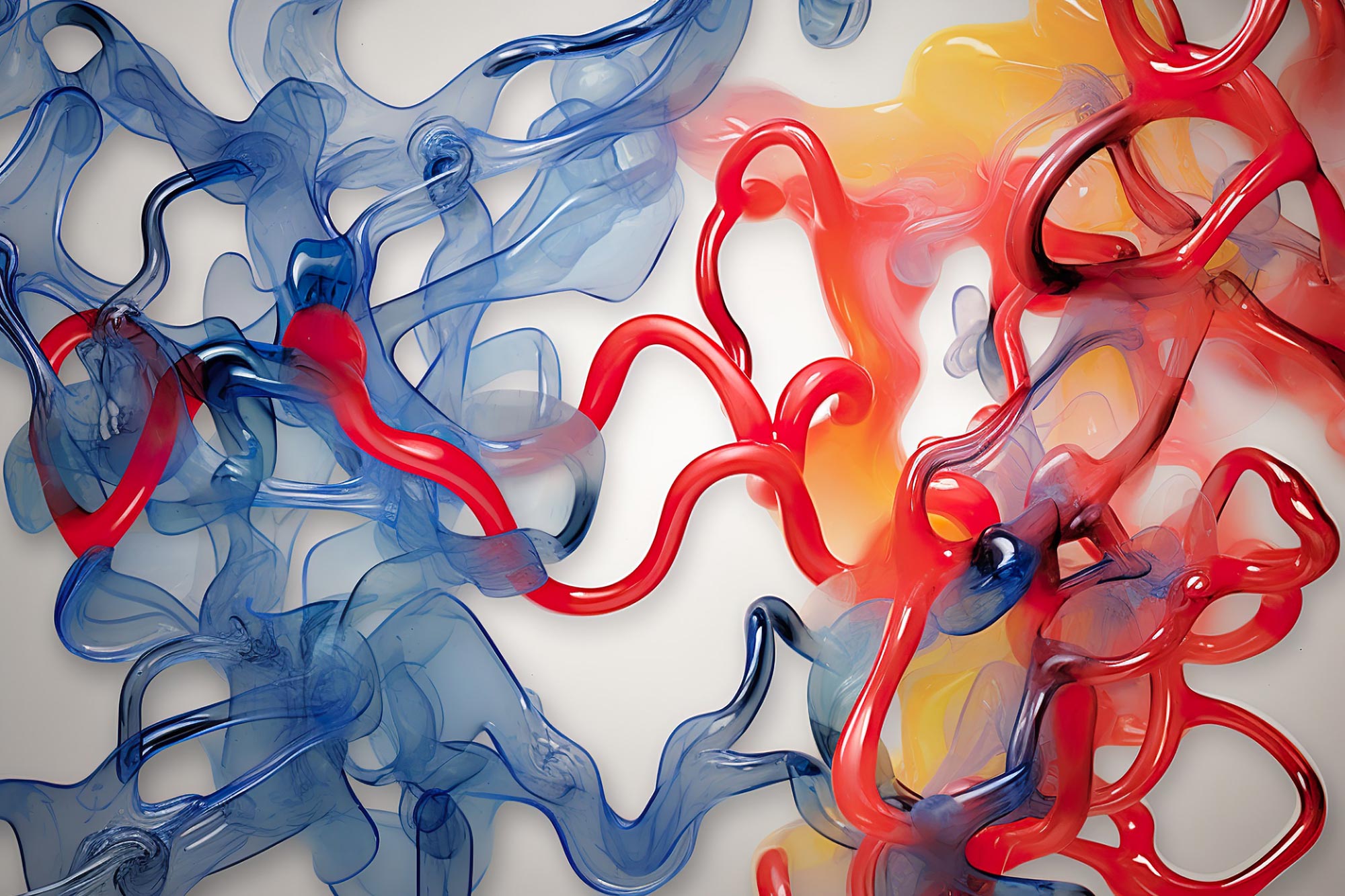Beklenmedik sürpriz! Daha zayıf bağlar, polimerleri on kat daha güçlü hale getirebilir

MIT ve Duke Üniversitesi’nden kimyagerler, yapılarına daha zayıf bağlar ekleyerek polimerlerin gücünü yenilikçi bir şekilde on kat artırdılar; bu, malzemelerin diğer fiziksel özelliklerini değiştirmeyen bir bulgudur. Bu atılım, diğer uygulamaların yanı sıra lastik lastiklerin ömrünün uzatılması ve mikroplastik atığın azaltılması üzerinde önemli bir etkiye sahip olabilir.
Kimyagerler, bir polimer ağına zayıf bağlar ekleyerek, malzemenin yırtılmaya karşı direncini büyük ölçüde artırdılar.
MIT ve Duke Üniversitesi’nden bir kimyager ekibi, polimerleri daha güçlü hale getirmenin mantıksız bir yolunu keşfetti: malzemeye bazı zayıf bağları dahil etmek.
Araştırmacılar, poliakrilat elastomer olarak bilinen bir polimer türüyle çalışarak, polimerin bazı yapı taşlarını birleştirmek için daha zayıf bir çapraz bağlayıcı türü kullanarak, malzemenin yırtılmaya karşı direncini on kata kadar artırabileceklerini keşfettiler.
Bu kauçuk benzeri polimerler, araba parçalarında yaygın olarak kullanılır ve ayrıca 3D baskılı nesneler için “mürekkep” olarak da kullanılır. Araştırmacılar şimdi bu yaklaşımı lastik lastikler gibi diğer malzeme türlerine genişletme olasılığını araştırıyorlar.
Jeremiah Johnson, kimya profesörü[{” attribute=””>MIT and one of the senior authors of the study, which was published on June 22 in the journal Science.

As this polymer network is stretched, weaker crosslinking bonds (blue) break more easily than any of the strong polymer strands, making it more difficult for a crack to propagate through the material. Credit: Courtesy of the researchers, edited by MIT News
A significant advantage of this approach is that it doesn’t appear to alter any of the other physical properties of the polymers.
“Polymer engineers know how to make materials tougher, but it invariably involves changing some other property of the material that you don’t want to change. Here, the toughness enhancement comes without any other significant change in physical properties — at least that we can measure — and it is brought about through the replacement of only a small fraction of the overall material,” says Stephen Craig, a professor of chemistry at Duke University who is also a senior author of the paper.
This project grew out of a longstanding collaboration between Johnson, Craig, and Duke University Professor Michael Rubinstein, who is also a senior author of the paper. The paper’s lead author is Shu Wang, an MIT postdoc who earned his PhD at Duke.
The weakest link
Polyacrylate elastomers are polymer networks made from strands of acrylate held together by linking molecules. These building blocks can be joined together in different ways to create materials with different properties.
One architecture often used for these polymers is a star polymer network. These polymers are made from two types of building blocks: one, a star with four identical arms, and the other a chain that acts as a linker. These linkers bind to the end of each arm of the stars, creating a network that resembles a volleyball net.
In a 2021 study, Craig, Rubinstein, and MIT Professor Bradley Olsen teamed up to measure the strength of these polymers. As they expected, they found that when weaker end-linkers were used to hold the polymer strands together, the material became weaker. Those weaker linkers, which contain cyclic molecules known as cyclobutane, can be broken with much less force than the linkers that are usually used to join these building blocks.
As a follow-up to that study, the researchers decided to investigate a different type of polymer network in which polymer strands are cross-linked to other strands in random locations, instead of being joined at the ends.
This time, when the researchers used weaker linkers to join the acrylate building blocks together, they found that the material became much more resistant to tearing.
This occurs, the researchers believe, because the weaker bonds are randomly distributed as junctions between otherwise strong strands throughout the material, instead of being part of the ultimate strands themselves. When this material is stretched to the breaking point, any cracks propagating through the material try to avoid the stronger bonds and go through the weaker bonds instead. This means the crack has to break more bonds than it would if all of the bonds were the same strength.
“Even though those bonds are weaker, more of them end up needing to be broken, because the crack takes a path through the weakest bonds, which ends up being a longer path,” Johnson says.
Tough materials
Using this approach, the researchers showed that polyacrylates that incorporated some weaker linkers were nine to 10 times harder to tear than polyacrylates made with stronger crosslinking molecules. This effect was achieved even when the weak crosslinkers made up only about 2 percent of the overall composition of the material.
The researchers also showed that this altered composition did not alter any of the other properties of the material, such as resistance to breaking down when heated.
“For two materials to have the same structure and same properties at the network level, but have an almost order of magnitude difference in tearing, is quite rare,” Johnson says.
The researchers are now investigating whether this approach could be used to improve the toughness of other materials, including rubber.
“There’s a lot to explore here about what level of enhancement can be gained in other types of materials and how best to take advantage of it,” Craig says.
Reference: “Facile mechanochemical cycloreversion of polymer cross-linkers enhances tear resistance” by Shu Wang, Yixin Hu, Tatiana B. Kouznetsova, Liel Sapir, Danyang Chen, Abraham Herzog-Arbeitman, Jeremiah A. Johnson, Michael Rubinstein and Stephen L. Craig, 22 June 2023, Science.
DOI: 10.1126/science.adg3229
The group’s work on polymer strength is part of a National Science Foundation-funded center called the Center for the Chemistry of Molecularly Optimized Networks. The mission of this center, directed by Craig, is to study how the properties of the molecular components of polymer networks affect the physical behavior of the networks.






